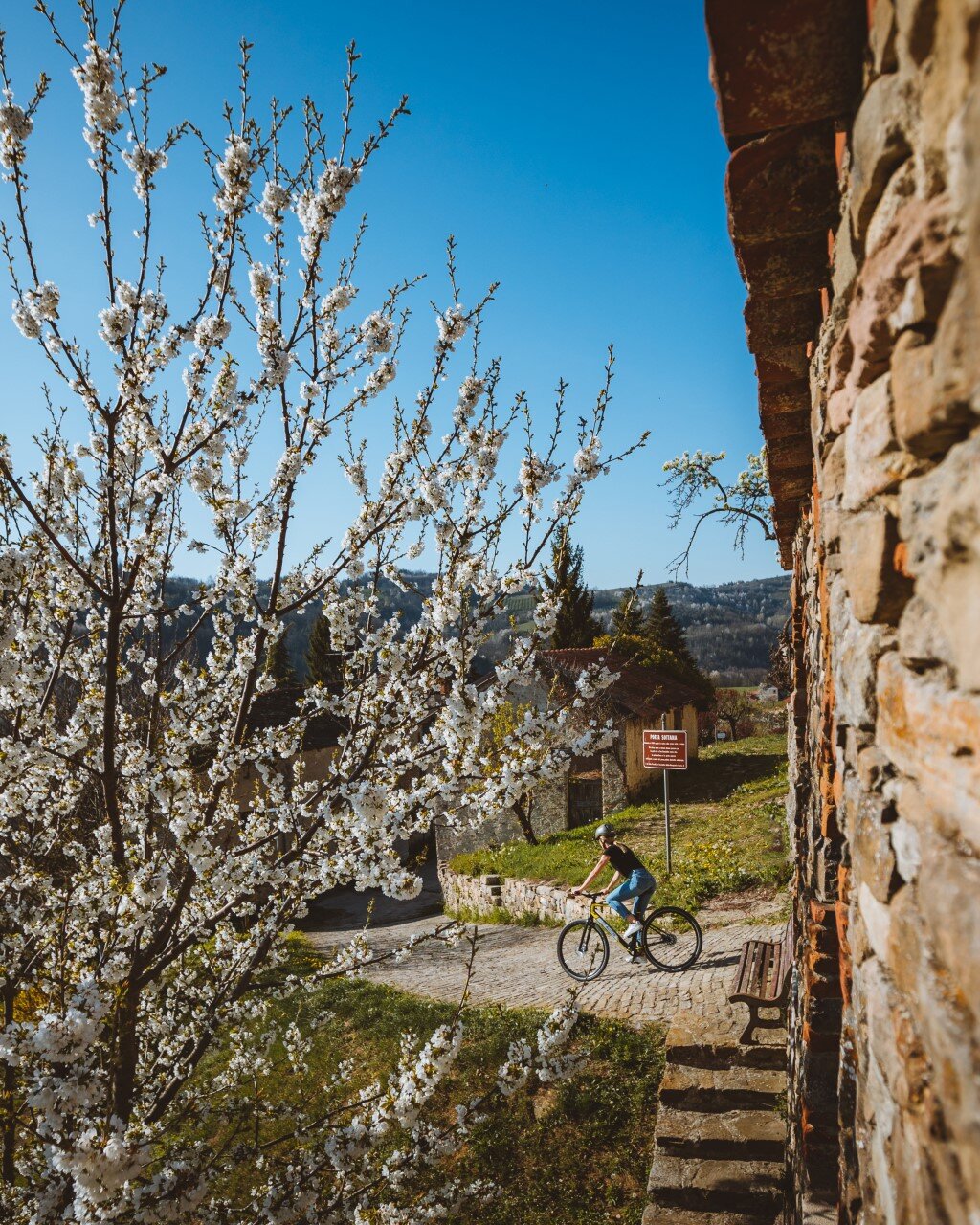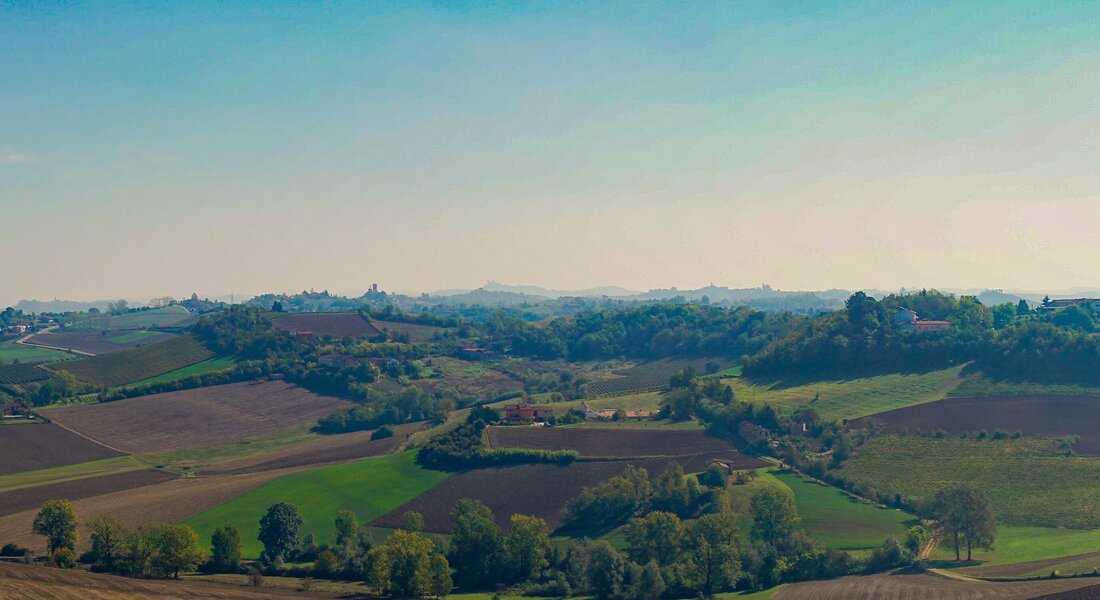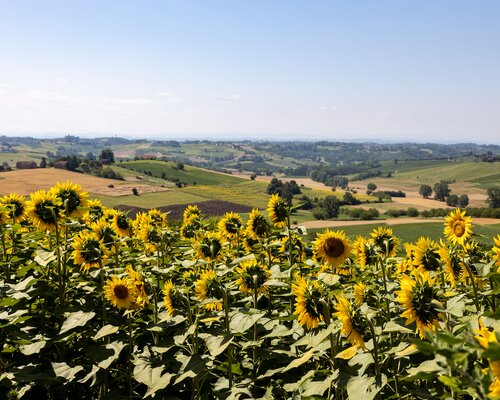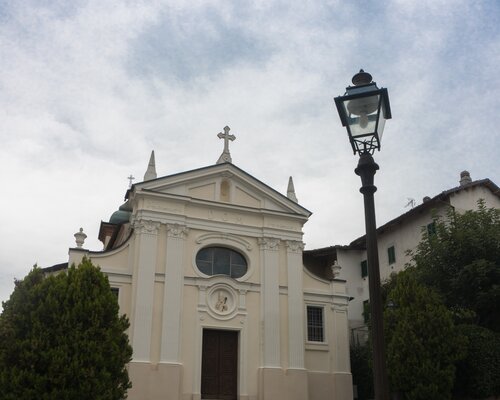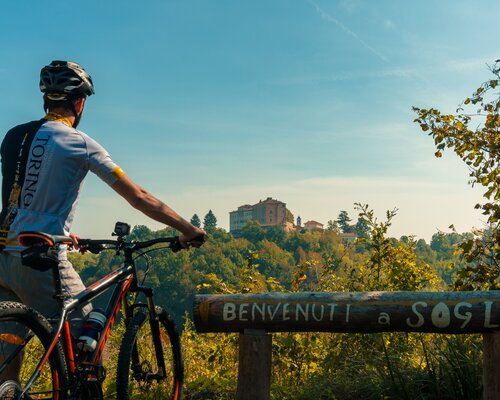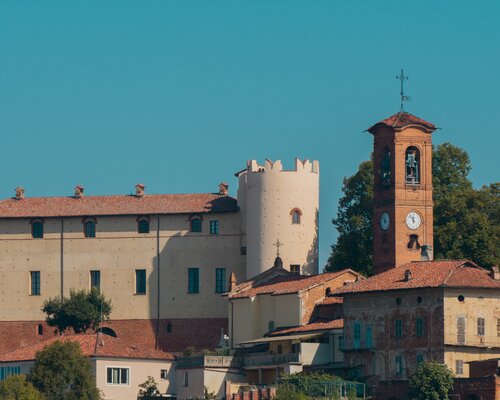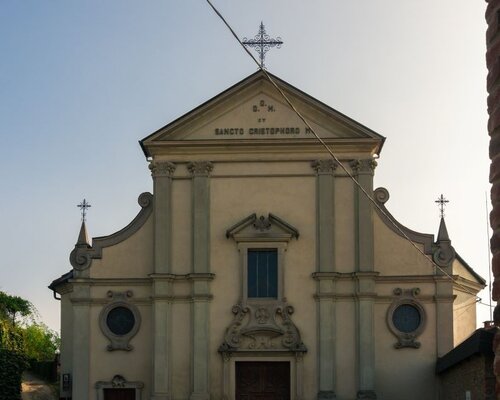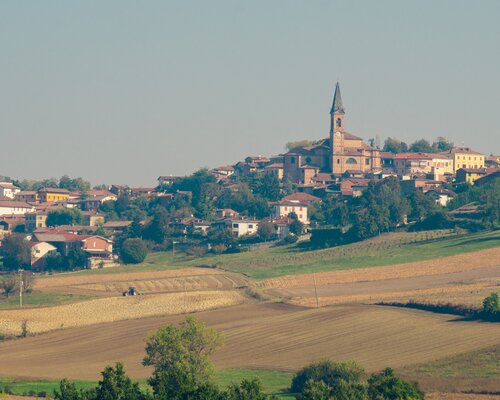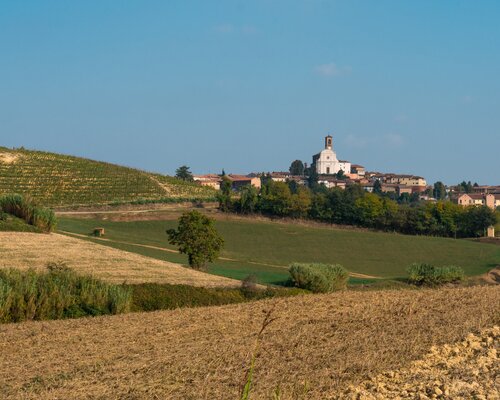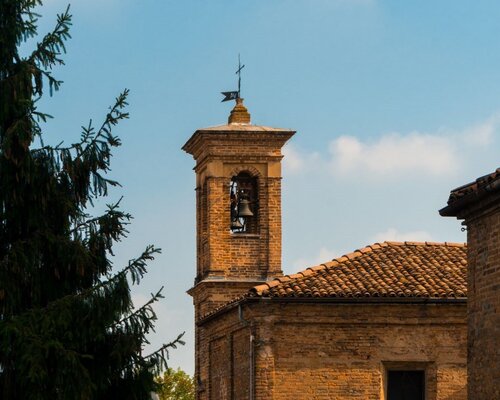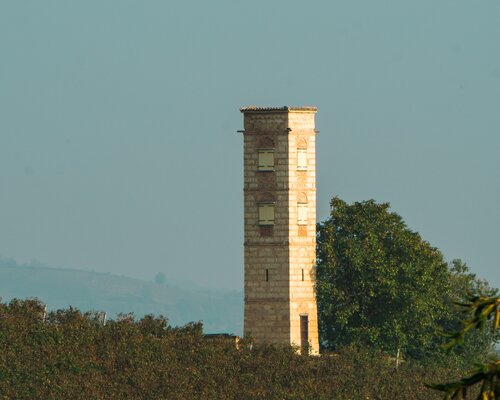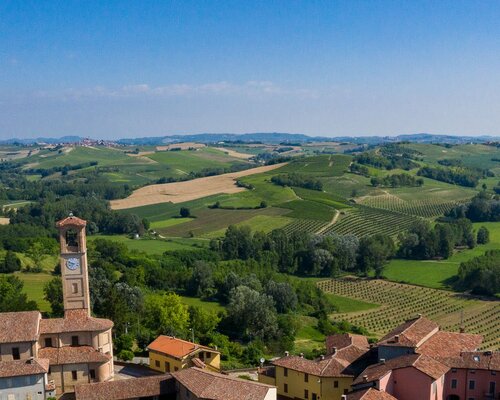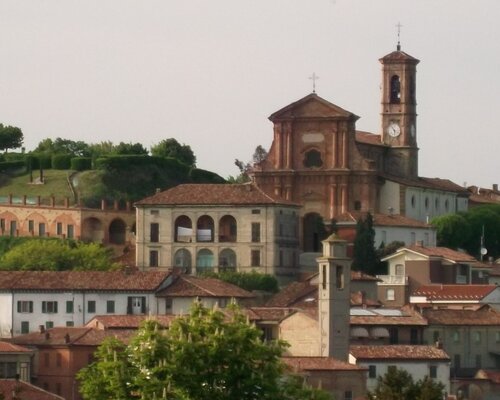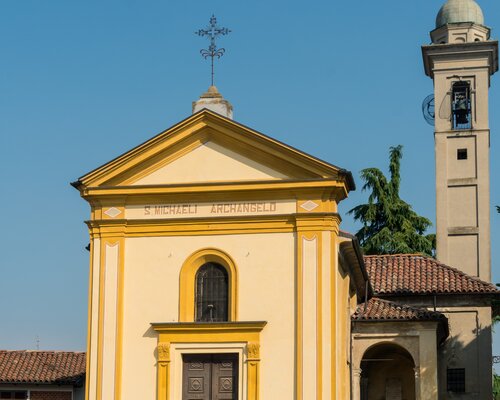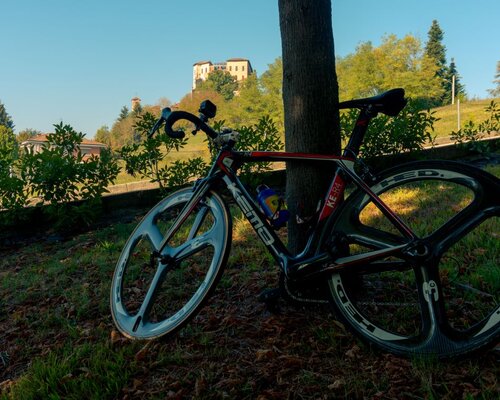When you are in Sanico go down Via San Pietro for about 90 metres, then take the first dirt road on the left.
At the intersection keep the left until you reach the paved road, then turn left after 80 metres. Go straight ahead on the dirt road for about 1,5 km. Go along the company “Fassa Bortolo” building in Località Gessi, then go straight ahead until you reach an intersection. Keep going down on Strada Provinciale 13. After less than a kilometre you come to an intersection again. Turn right into Strada Provinciale 57d. The route continues on Strada Provinciale that also goes through farmlands, then Via Roma in Moncalvo, where the appeal of the medieval city meets a unique landscape of hills.
The main artistic heritage of the city is represented by the so-called “Il Moncalvo” Guglielmo Caccia and his daughter Orsola Maddalena. In fact, their masterpieces enrich the church of St Francesco, with its museum, and the church of Sant’Antonio Abate. It is also important to mention the church of Madonna delle Grazie, built in the 16th century and designed by Magnocavallo; and the ruins of the castle with tunnels that hosted guards ready to prevent looting and enemy attacks for years.

